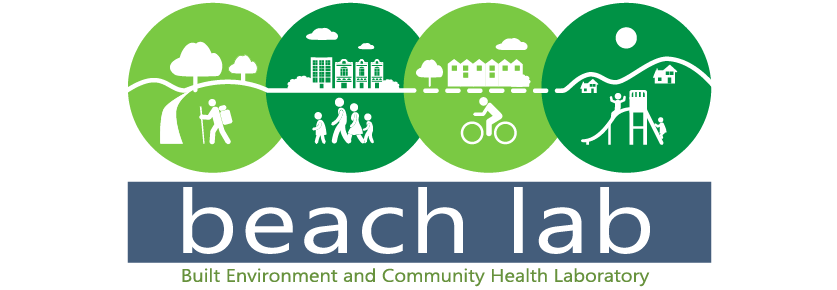In April 2024, several members of the BEACH Lab hit the road to Savannah, GA to share some of our recent research at the American Academy of Health Behavior’s Annual Scientific Meeting. We had three posters in the same session, learned about AI and a variety of other methods for studying health behavior, and had some fun exploring all of the unique and historical charm of the ‘city of squares’.
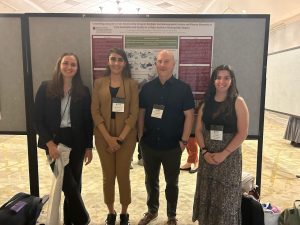
Anna Chupak presented her abstract, “Disparities in Pedestrian and Bicycle Crashes by Social Vulnerability Across South Carolina”. This study assessed inequities in relative rates of pedestrian and cyclist crashes according to level of social vulnerability across South Carolina census tracts, and examined how this relationship differs in rural versus urban areas. Her study found that census tracts with greater overall social vulnerability were significantly associated with a greater number of and more severe pedestrian and cyclist crashes per trip in urban, but not rural, areas. Similar results were found for specific dimensions of social vulnerability (i.e., socioeconomic status, and household composition and disability). These findings may help policymakers, infrastructure planners, and public health interventionists identify communities within South Carolina experiencing a disproportionate number of and severity of pedestrian and cyclist crashes.
Anna also thoroughly enjoyed conversing with other researchers and professionals on a wide range of health topics including physical activity, mental illness, and chronic disease prevention. She also attended a variety of helpful and intriguing seminars, such as a meta-analysis workshop via the statistical software R, an informational session on how to apply for research funds from the National Institutes of Health (NIH), and a talk on the creative application of AI in health-related research. Furthermore, she partook in a relaxing, meditative, and device-free walk through the beautiful Forsyth Park with her colleagues in efforts to promote physical activity. As someone with a sweet tooth, she delighted in exploring Savannah’s unique cafés and chocolateries.
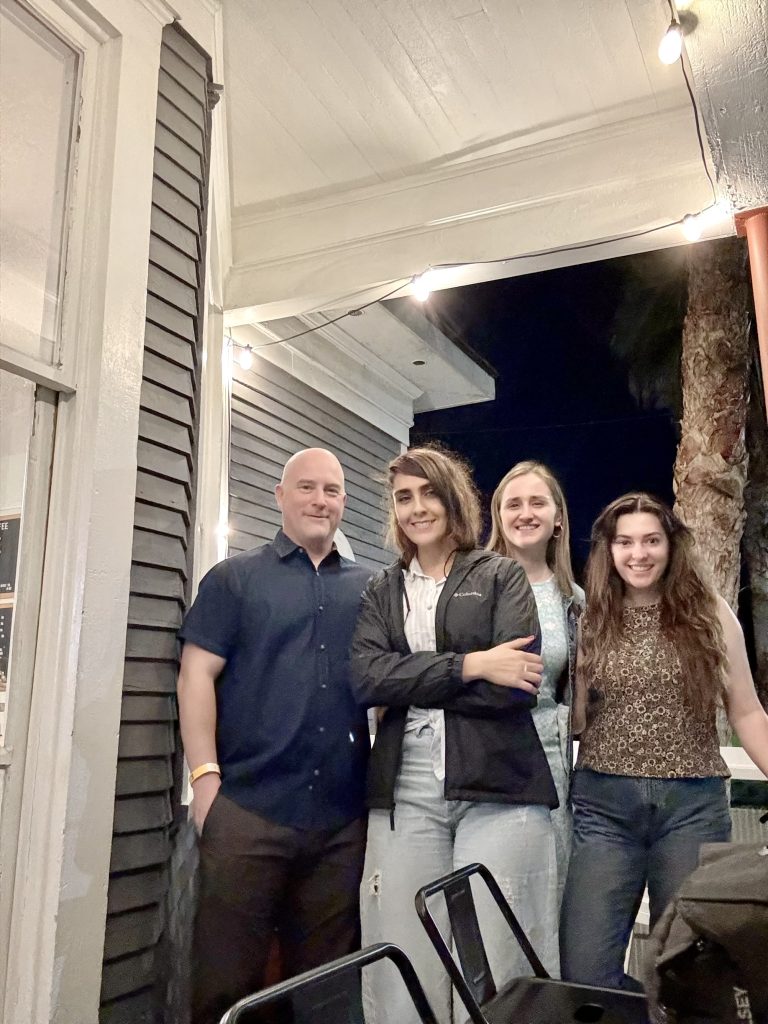

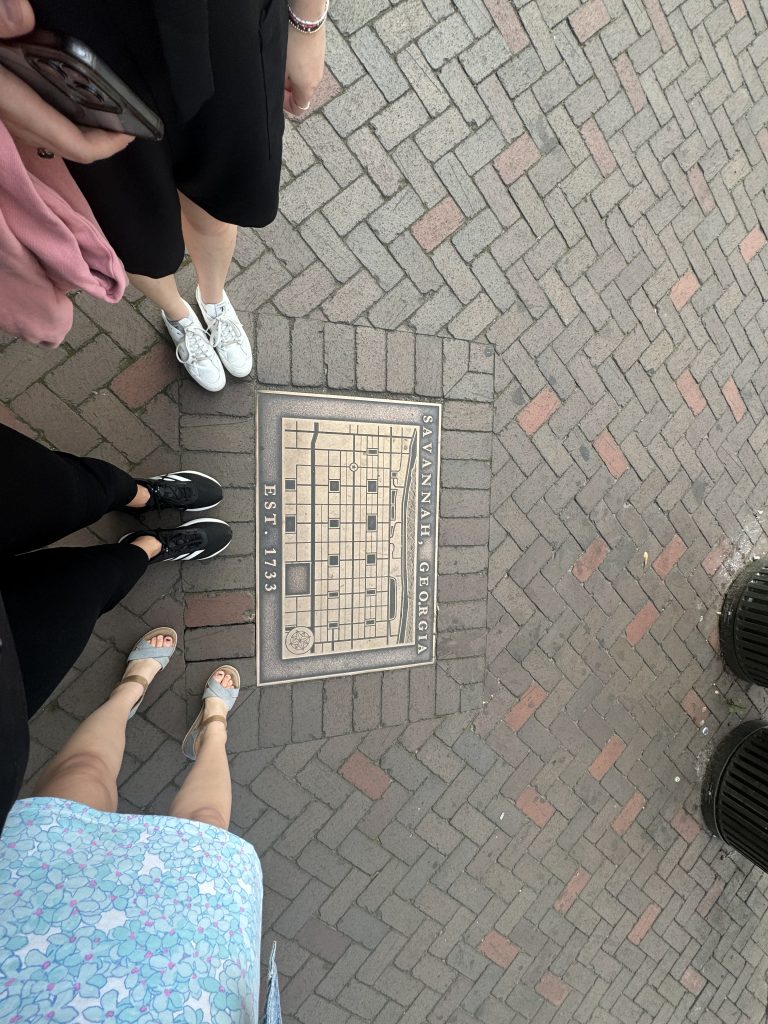
Farnaz Hesam Shariati presented a poster about the availability and quality of parks in four cities (Columbia, West Columbia, Cayce, and Forest Acres) in South Carolina, titled “Unearthing Inequities in the Relationship between Multiple Sociodemographic Factors and Diverse Elements of Park Availability and Quality in a Major Southern Metropolitan Region.” This study explored neighborhood socioeconomic and racial/ethnic inequalities in park access and quality (transportation access, facility availability, facility quality, amenity availability, park aesthetics, park quality concerns, and neighborhood quality concerns) in the study setting, including 241 block groups and 77 parks. In addition, Farnaz enjoyed several poster presentations and panels at the conference, such as a poster about the sense of belonging and physical and social environments and a workshop about how to use AI effectively in academia and daily research and studies. Further, she became familiar with NIH procedures in an educational workshop.
Aside from academia, Savannah was super fun! Savannah’s street life and beautiful buildings with unique facades, particularly its walkability features, amazed Farnaz. She walked alongside the river with the BEACH Lab team, having a memorable time (except for the giant roaches! LOL). She plans to return there, especially to see a bookstore close to downtown again, which had two adorable cats showing off in the vitrine!
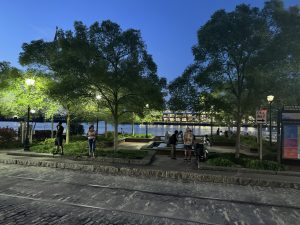
Erin Looney presented a poster presentation titled “Does the combined effect of walkability and PM2.5 exposure impact health behaviors and outcomes in South Carolina?” Her study investigated the combined effect of fine particulate matter and walkability on three health metrics: physical inactivity, obesity, and asthma, finding that tracts with high PM2.5 and low walkability were associated with increased asthma prevalence compared to census tracts with low PM2.5 and high walkability (p=.004). Erin was eager to meet some students from her Alma Mater, Oklahoma State University, and attended multiple sessions on Health and Artificial Intelligence.
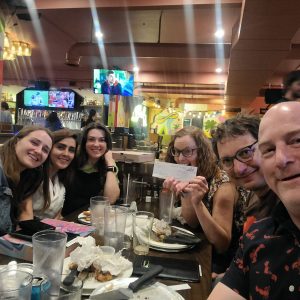
Overall, it was a fun trip to a beautiful location, and, along with Dr. Brie Turner McGrievy and Dr. Matt McGrievy, the BEACH Lab crew capped it off by winning trivia night at the Mellow Mushroom next door to the hotel. Until next year, American Academy of Health Behavior!
